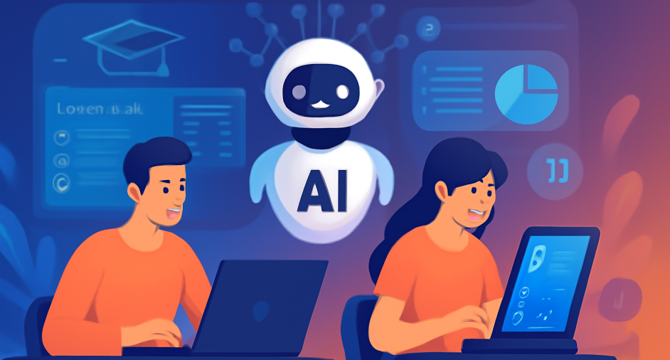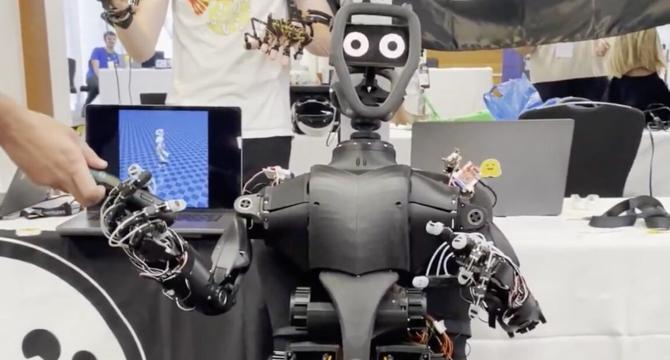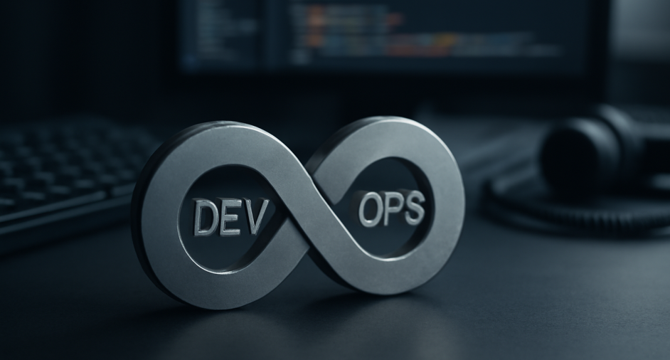Robotics News
Unite
399

Image Credit: Unite
How AI Agents Are Transforming the Education Sector: A Look at Kira Learning and Beyond
- AI agents are revolutionizing the education sector by providing personalized support and feedback to teachers and students, moving towards a future of adaptive learning for each student.
- Kira Learning, a prominent platform in this transformation, utilizes AI for various educational tasks, enhancing teacher-student interaction and efficiency by automating administrative work.
- AI agents like Kira improve teaching quality by analyzing student data, adjusting lessons in real-time, and offering personalized feedback, creating a more engaging and effective learning environment.
- By personalizing education, AI platforms such as Kira, Squirrel AI, and Microsoft Reading Coach cater to individual student needs, closing learning gaps and keeping students motivated.
- AI technologies like VR, AR, and gamification enhance student engagement, while automation of administrative tasks by AI systems streamlines school operations for better decision-making.
- Teacher training is evolving to incorporate AI tools effectively, ensuring educators can maximize technology benefits for student learning and success.
- Kira Learning's smart AI tools enhance lesson planning, grading, and personalized feedback, saving time for teachers and providing real-time support for students based on individual progress.
- Kira's comprehensive AI features, such as the AI Tutor, AI Teaching Assistant, and AI Grader, work collaboratively to enhance lesson customization, grading efficiency, and student insights.
- Despite the benefits AI brings to education, challenges like equity, data privacy, bias, and the importance of maintaining the human element in teaching require attention and careful consideration.
- AI is designed to assist teachers and improve education outcomes, emphasizing the need for fair access to technology, ethical data usage, and the human touch in teaching.
- In conclusion, AI agents like Kira Learning are reshaping education by providing personalized, efficient, and engaging learning experiences, with a focus on empowering both teachers and students for future success.
Read Full Article
24 Likes
Medium
367

Image Credit: Medium
Building a LiDAR Obstacle Detector in C++
- This project focuses on processing Lidar point cloud data in urban driving scenarios, explaining Lidar's principles and advantages over other sensors like cameras and radar.
- LiDAR provides accurate 3D measurements by emitting laser pulses to calculate distances, even in poor lighting conditions, and generates high-resolution maps of surroundings.
- The project processes raw point cloud data (in .pcd files) using filtering, segmentation, and clustering techniques for obstacle detection in highway driving scenarios.
- Lidar data is transformed into structured obstacle detections with bounding boxes, essential for path planning, collision avoidance, and navigation.
- The article details the steps involved in filtering, segmenting, and clustering Lidar data, enhancing understanding of obstacle detection in autonomous systems.
- Various methods like Voxel Grid Filtering and Euclidean clustering are employed to process and group point cloud data efficiently for obstacle detection.
- RANSAC algorithm is utilized to separate road points from obstacles, aiding path planning by identifying road surfaces and potential hazards.
- KD-Tree data structure improves nearest neighbor search efficiency, essential for clustering points in obstacle detection scenarios.
- Euclidean clustering algorithm groups points based on proximity, facilitating the identification and labeling of different objects like cars or pedestrians.
- Implementing bounding boxes around clustered points further enhances obstacle detection and path planning by defining restricted areas to avoid collisions.
Read Full Article
22 Likes
Medium
4.1k

Image Credit: Medium
Strategy Over Hype: Where AI Capital Is Actually Flowing in 2025
- Capital continues to flood into AI across industries, but some leaders caution against spending without clarity and strategy.
- IBM warns that while AI budgets are growing, many companies lack a clear deployment strategy, emphasizing the need for value-linked deployment.
- Elon Musk's xAI ventures into finance through partnerships for predictive analytics and scenario-based forecasting, competing with other AI tools.
- Startups like Parloa and Orca AI secure significant funding to revolutionize AI-driven customer service and maritime navigation, respectively.
Read Full Article
18 Likes
Arstechnica
449

Image Credit: Arstechnica
Research roundup: 7 stories we almost missed
- Scientists at the Vienna University of Technology have successfully made a predicted effect of special relativity visible by reproducing a rotational effect in the lab using laser pulses and precision cameras.
- A ping-pong playing robot has been developed that can return hits with 88 percent accuracy.
- The rare genetic mutation responsible for the orange color of cats has been discovered.
- This month's research roundup features various interesting scientific stories that were almost missed, including the aforementioned discoveries and experiments.
Read Full Article
27 Likes
Discover more
The Robot Report
90

Indy Autonomous Challenge coming to California
- The Indy Autonomous Challenge is set to debut in California, showcasing racecars with cutting-edge autonomy technology.
- The event, part of the Grand Prix of Monterey, will feature autonomous racecars controlled by AI software developed by university teams from North America, Europe, and Asia.
- In addition to the race, an AI & Automation Summit will gather experts to delve into the future of artificial intelligence and robotics at WeatherTech Raceway Laguna Seca.
- Eight university teams will participate in the autonomous race, while two teams will compete in an exhibition race at the Monza F1 circuit during the Milan Monza Motor Show.
Read Full Article
5 Likes
The Robot Report
68

SS Innovations reaches 4,000 robotic surgeries with SSi Mantra robotic system
- SS Innovations International Inc. announced that its SSi Mantra surgical robotic system has been used in 4,000 successful surgeries across various types without any complications, injuries, or mortalities.
- The company highlighted approximately 215 cardiac surgeries, with six successfully performed via telesurgery in India using the SSi Mantra 3 system.
- SS Innovations is focused on making robotic surgery affordable and accessible globally, with plans to enter the U.S. and European Union markets soon.
- The SSi Mantra features advanced technology like robotic arms, an ergonomic surgeon command center, and regulatory approvals for remote surgery and teleproctoring, enhancing safety and efficiency in surgical procedures.
Read Full Article
4 Likes
Unite
299

Image Credit: Unite
Microsoft Discovery: How AI Agents Are Accelerating Scientific Discoveries
- Microsoft Discovery is a new platform using AI agents to accelerate scientific research and development, addressing challenges faced by traditional methods that are slow and iterative.
- The platform utilizes graph-based knowledge reasoning, specialized AI agents, and an iterative learning cycle to support scientists in generating hypotheses, analyzing data, and conducting experiments.
- Microsoft Discovery stands out by supporting the entire research process, from idea inception to final results, leading to faster scientific discoveries and reducing time delays.
- It employs a graph-based knowledge engine that maps relationships between scientific data, providing transparency in conclusions and enabling researchers to explore connections across different fields.
- AI agents in Microsoft Discovery act independently, making decisions and solving problems, coordinating with each other to enhance efficiency and innovation in scientific research.
- By using specialized agents that focus on different research tasks and mimicking human research team collaboration, the platform can accelerate discoveries and facilitate complex work processes.
- Real-world impact: Microsoft researchers found a new coolant for data centers in about 200 hours, significantly faster than traditional methods, showcasing the platform's capability for rapid innovation.
- The platform is adaptable and allows researchers to create custom agents tailored to specific requirements, enhancing collaboration and efficiency in research processes.
- Challenges include ensuring AI accuracy, transparency in reasoning, integration with existing systems, and considerations of intellectual property protection and changing scientific disciplines.
- Microsoft Discovery redefines research by enabling collaboration between AI agents and humans, expediting discovery methods and linking ideas across different domains.
- By balancing AI capabilities with human oversight, platforms like Microsoft Discovery have the potential to revolutionize research and development, offering faster solutions to global challenges like climate change and diseases.
Read Full Article
18 Likes
The Robot Report
150

First robot boxing match; Persona AI developing industrial humanoid
- Persona AI is developing an industrial humanoid robot to advance robotics by personifying AI and expanding capabilities beyond traditional factory tasks.
- The company aims to commercialize humanoid robots for heavy industry needs, focusing on product commercialization and team building for success in the robotics industry.
- Boston Dynamics released a video showcasing the Atlas humanoid robot in an industrial parts-handling application, highlighting advancements in AI models for perception and grasping.
- Unitree Robotics hosted the 'first humanoid robot boxing match,' demonstrating agility in robots, while UBTech plans to launch a full-size humanoid robot under $20,000 for home use.
Read Full Article
9 Likes
The Robot Report
322

100 XCMG autonomous mining trucks begin operating in Inner Mongolia
- XCMG has delivered 100 autonomous mining trucks to the Huaneng Yimin Open-Pit Coal Mine in Inner Mongolia, China.
- The fleet of autonomous electric haul trucks at the Yimin Mine is considered the world's first and represents a milestone in sustainable mining practices.
- The autonomous trucks integrate smart battery-swapping technology, 5G connectivity, and AI-powered safety management for increased efficiency.
- The initiative is expected to reduce over 15,000 tons of diesel consumption annually and combat climate change through significant CO2 emissions reduction.
Read Full Article
19 Likes
Arstechnica
322

Image Credit: Arstechnica
Want a humanoid, open source robot for just $3,000? Hugging Face is on it.
- Hugging Face, known for machine learning and AI, is now venturing into robotics with the release of a humanoid robot named HopeJR.
- HopeJR is priced at around $3,000, a much more affordable option compared to other robots like Unitree's $16,000 G1.
- The robot, co-designed with The Robot Studio, features up to 66 actuated degrees of freedom, can walk, manipulate objects, and is open source.
- Hugging Face aims to make robotics accessible and transparent by providing open-source, affordable robots to prevent domination by a few big players in the field.
Read Full Article
19 Likes
Unite
200

Image Credit: Unite
Matthew Fitzpatrick, CEO of Invisible Technologies – Interview Series
- Matthew Fitzpatrick is the CEO of Invisible Technologies, focusing on designing and optimizing end-to-end business solutions.
- Invisible Technologies specializes in blending advanced technology with human expertise for efficient scaling in various business operations.
- Matthew transitioned from leading QuantumBlack Labs at McKinsey to CEO of Invisible Technologies to operationalize AI at scale.
- Lessons from McKinsey include the importance of organizational transformation and transitioning from experimentation to production in AI adoption.
- Enterprises achieving ROI with AI align use cases with core business KPIs, invest in data quality, and move to tailored solutions.
- Demand is rising for domain-specific data labeling as foundation model providers venture into complex verticals.
- Agentic AI, emphasizing decision-making in workflows, shows promise in high-volume, complex tasks like customer support and claims processing.
- Invisible trains models for chain-of-thought reasoning to enhance transparency, debugging, and performance gains in enterprise AI.
- Cultural and linguistic precision are crucial in building globally scalable AI to avoid misinterpretations and compliance risks.
- Invisible helps companies navigate the 'last mile' from proof of concept to production by offering technical expertise and data infrastructure.
Read Full Article
12 Likes
Unite
445

Image Credit: Unite
Unlocking $100M+ in Predictive Maintenance Value Through Edge Infrastructure
- Industrial companies often struggle to scale predictive maintenance initiatives beyond successful pilots, mainly due to infrastructure challenges.
- While algorithms and sensors are vital, the key to unlocking enterprise-wide predictive maintenance lies in addressing scalability issues in connecting the technology.
- The data challenge posed by the massive amount of sensor-generated data requires processing at the edge to avoid latency in time-critical applications.
- Successful predictive maintenance implementation integrates data seamlessly with enterprise systems to generate work orders and minimize disruptions.
- Creating standardized edge infrastructure is crucial for scaling predictive maintenance, reducing costs, and complexity when implementing the technology across assets.
- Companies that invest in a standardized infrastructure for predictive maintenance see exponential returns, with potential savings reaching tens of millions of dollars by scaling the initiative.
- The competitive advantage in industrial predictive maintenance lies in leveraging standardized edge infrastructure for enterprise-wide transformation.
- Success in predictive maintenance is determined by early recognition of the importance of edge infrastructure, enabling industrial intelligence at scale.
- The time is now to invest in standardized infrastructure for predictive maintenance to stay competitive and reap the benefits of enterprise-wide implementation.
- Building a solid foundation in edge infrastructure is essential for embracing the future of industrial intelligence in prescriptive maintenance.
Read Full Article
26 Likes
Unite
245

Image Credit: Unite
AI Is Changing the Creator Economy – Will Digital Content Lose Human Touch?
- Generative AI and autonomous agents are reshaping the creator economy by promoting divergent thinking, boosting creativity, and facilitating collaboration.
- AI is transforming content production by offering efficiencies, but questions arise about its potential to render human creativity outdated.
- Challenges faced by creators using AI include lack of customization, data privacy concerns, and limited integration into existing workflows.
- Despite limitations, AI enhances content velocity with tools like metadata generation, editing features, and localization for multilingual content.
- Successful AI use cases often involve a hybrid approach, where human input defines the tone and AI scales it.
- AI is creating new gatekeepers in the creative process, potentially leading to creators losing visibility and control over their content.
- The future of AI in the creator economy involves adapting to new roles like AI content curators, prompt leads, and AI workflow designers.
- Human-AI collaboration models are showing promise in campaigns, combining human strategists with AI tools for faster, cost-effective outcomes.
- With the rise of open-source AI alternatives, creators can access more customized and transparent tools that cater to diverse cultural contexts and audience needs.
- While AI can automate certain tasks, the creativity, emotional intelligence, and cultural nuances required in content creation still necessitate a human touch.
- The future success in the creator economy lies in mastering AI ethically and efficiently, combining human decision-making with AI capabilities for impactful content creation.
Read Full Article
14 Likes
Unite
213

Image Credit: Unite
Speed Without the Stress: How AI Is Rewriting DevOps
- The demand for faster software development has put pressure on DevOps teams, leading to burnout and inefficiencies in observability tools.
- Observability is about understanding the story behind data, not just collecting vast amounts of it.
- AI plays a crucial role in simplifying observability by providing contextual analysis and actionable insights.
- DevOps teams face burnout due to being overloaded with multiple responsibilities and constant firefighting.
- AI can automate tasks like alert resolution, anomaly detection, and log correlation, reducing the burden on DevOps engineers.
- By offering real-time anomaly detection, predictive failure modeling, and automated resolution, AI lightens the workload of DevOps engineers.
- AI amplifies the work of engineers, allowing them to focus on designing systems rather than mundane tasks.
- Increasing developer velocity requires removing friction and integrating security throughout the development process with the help of AI.
- AI enables faster deployments without compromising quality, ensuring that speed and stability work in harmony.
- With AI, DevOps becomes a sustainable journey towards smarter systems, allowing teams to embrace speed without stress.
Read Full Article
12 Likes
For uninterrupted reading, download the app